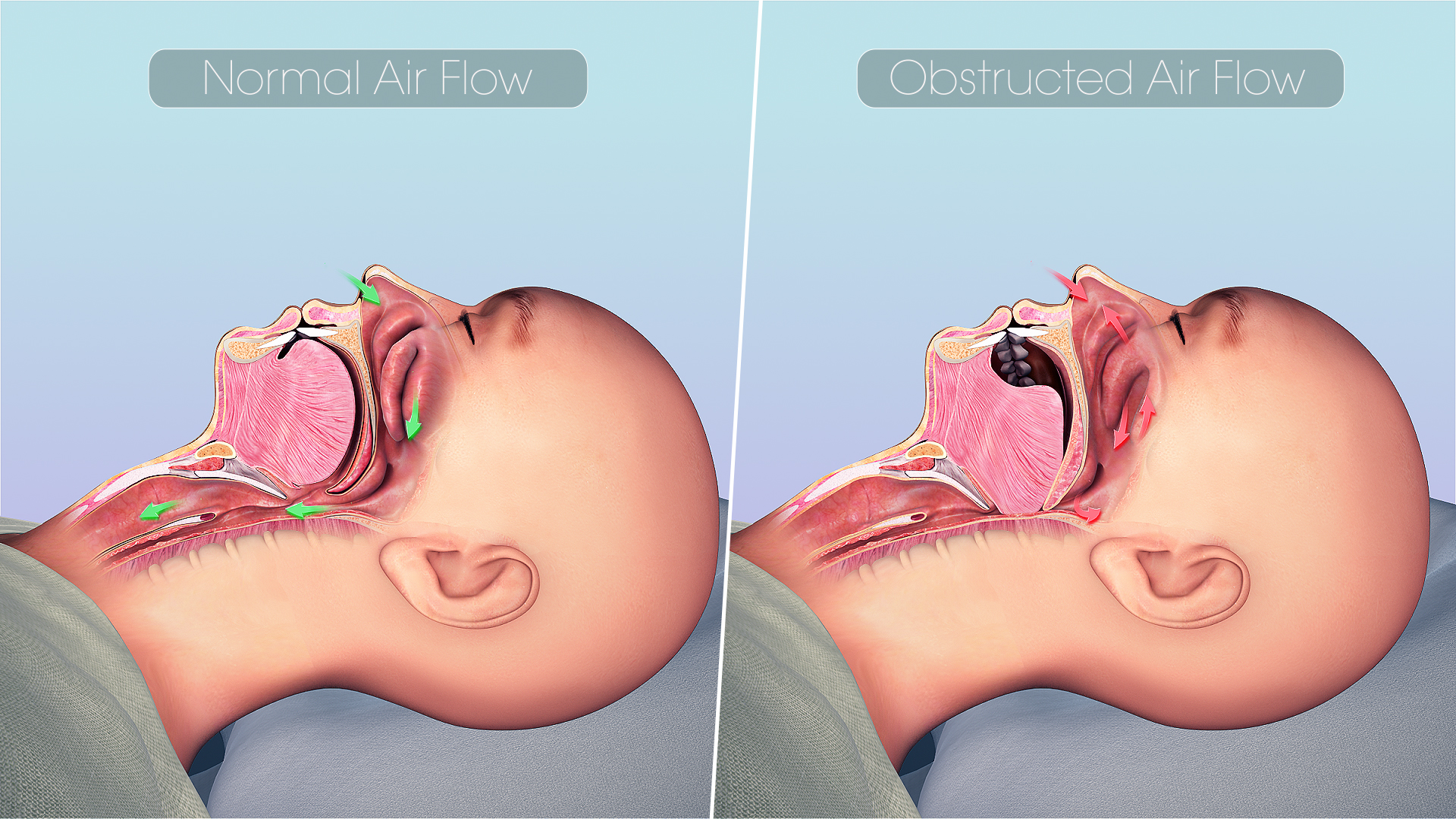
Comparison between Normal Air Flow(L) and Obstructed Air Flow(R)
Causes
- Obstructive sleep apnea: is the more common sleep apnea disorder. The cause for obstructive sleep apnea is the relaxation of the muscles at the back of the throat. When these muscles relax, the airway narrows and not enough air is inhaled, thus causing the oxygen levels in the blood to decrease. The brain senses this inability to breathe and rouses us from sleep so that the airway can be reopened. This waking up from sleep is so brief that one doesn’t even remember it and may be in the form of snorting, gasping or choking. This pattern repeats itself several times all night, preventing the body from reaching deep restful phase of sleep.
- Central sleep apnea: is less common and occurs when the brain fails to transmit signals to the breathing muscles. Being overweight, having a thicker neck, having narrow airways, being amale, being older, having a nasal congestion, having a family history of sleep apnea, smoking, are some of the main causes for increasing the risk of developing sleep apnea.
Symptoms
Some of the most frequent signs and symptoms of this disease are loud snoring, waking up with a sore or dry throat, sleepiness and lack of energy during the day, waking up in the night with a choking or gasping sensation, headaches, difficulty in concentration when awake, and irritability.Treatment
Sources-
- https://www.webmd.com/sleep-disorders/sleep-apnea/sleep-apnea
- https://www.mayoclinic.org/diseases-conditions/sleep-apnea/symptoms-causes/syc-20377631
- https://www.nhlbi.nih.gov/health-topics/sleep-apnea
- https://www.sleepfoundation.org/articles/sleep-apnea

The Paradox of REM Sleep
Sleep may seem simple and static, but, in reality, sleep is a complex and dynamic process. Researchers have discovered distinct, measurable changes in both the body and brain, occurring regularly and predictably throughout the night. Read More..








